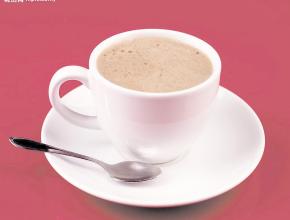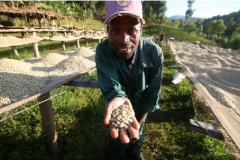Introduction of 2016 International (WBC) Competition process and registration method
The content of the WBC competition is mainly composed of three parts: Espresso,Cappuccino and Signaturecoffee, namely espresso, cappuccino and creative coffee. In the past, the requirement for cappuccino was quite strict, with single espresso mixed with whisked milk, the thickness of the foam was not less than one centimeter, and the size of the container was limited to 150~180ml. How to make delicious and coffee-flavored drinks under such stringent requirements has always been a great challenge for contestants. The new change replaces "cappuccino course" with "milk coffee course". There is no rigid requirement for the thickness of milk foam, and the size of the container has been relaxed to 30~240ml.
With regard to the changes in milkcoffee course, the explanation on WCE is:
After fifteen years of focusing on a single definition of a milk drink on the WBC stage, we think it's time to open up the milk beverage course to something that better represents where we are today as an industry: open-minded to anything new and delicious.
In the whole coffee industry, the mixture of milk and coffee is undoubtedly the most accepted and loved by the public. But on the WBC stage, milk coffee has been limited for 15 years. Therefore, from the next year, the WBC competition will accept the independent ideas of players from all over the world on the milk coffee.
"I'm also looking forward to seeing new combinations of milk and coffee being explored." when Matt talked about the changes in Milk Coffee, he also expressed expectations for the creativity of baristas in the future, but it may also be a hidden worry for the coffee industry.
"The freedom to choose the volume of the drink will promote laziness and could result in the stagnation of Roasting and Barista technique."
Relaxing the coffee-to-milk ratio is likely to slack off baristas and bakers. At present, many coffee roasting will have the problem of insufficient flavor development, and many people will confuse shallow roasting with flavor development. In the past, for a fixed proportion of cappuccino, if the flavor development of coffee beans was not enough, it would lead to the problem of weak drink and weak sense of balance, thus prompting roasters to improve in the direction of complete flavor development. now it only needs to reduce the proportion of milk when mixing to cover up the incomplete development of coffee beans. Obviously, this is not good for the improvement of the skills of baristas and bakers.
I love me a good Cappuccino. Well made Cappuccinos are rare. These changes could put them on the endangered list. " When the next perfect cappuccino is actually relatively rare, Matt worries that the rule change will make the perfect cappuccino less likely to appear.
The same worry comes from the 2009 WBC champion Gwilym Davies, "The capp is the most difficult milk drink to make: the balance of foam depth, bubble size and temp is a skill baristas should have, like being able to pour a classic capp, not just a swan."
I like a 5oz single Capp made well and it is very difficult to get, I fear it will now be even harder. "

Important Notice :
前街咖啡 FrontStreet Coffee has moved to new addredd:
FrontStreet Coffee Address: 315,Donghua East Road,GuangZhou
Tel:020 38364473
- Prev

Kenyan coffee is highly competitive in the market, and the value chain analysis of coffee
1. Background Coffee is one of the most important agricultural products in international commodity trade. Historically, as early as the 1990s, coffee was the second largest internationally traded commodity after oil. However, due to the imbalance between coffee production, production and sales at different stages, the coffee industry has been in crisis more or less over the past decade. As a
- Next

Foreign coffee is when foreign coffee flows into China's foreign coffee market
As the first coffee beans were picked, roasted, ground, brewed, and brewed, the legend of coffee growing and coffee culture spreading across our tiny planet became one of the greatest and most romantic stories in history. Legends about the origins of coffee vary, but most of them are bizarre.
Related
- Is espresso stored overnight in the refrigerator harmful to your body? Is frozen coffee better than freshly ground coffee?
- What parameters and proportions of water temperature should be used to grind and brew fresh coffee beans? Why can't I drink freshly roasted coffee right away?
- Customers have "changed" Manner's new products! Shop assistant: Please don't mess around!
- Remove sockets in customer areas at Starbucks stores?! Netizen: I won't go if I really tear it down
- What is the difference between the taste steps of sun-dried coffee and washed coffee? Why is sun-cured coffee sweeter and washed coffee sour?
- The recipe for salty grapefruit dirty is revealed! Coffee Festival salty grapefruit dirty coffee making materials parameters ratio milk share!
- How about the flavor of Sunlight 74158 at Sidamo Banshaha Mathieu Processing Factory in Ethiopia? 74158 Share the proportion of coffee brewing parameters!
- What effect does Italian American coffee with filter paper have? Will coffee taste better if it is put on filter paper at the bottom of the powder bowl?
- What is the color difference in coffee beans? What are the characteristics of honey processed coffee beans? Why are the anaerobically treated coffee beans uneven in color?
- How does novice Xiaobai quickly get started and make coffee? Newbies learn to make coffee by hand and share the specific steps and process process!

